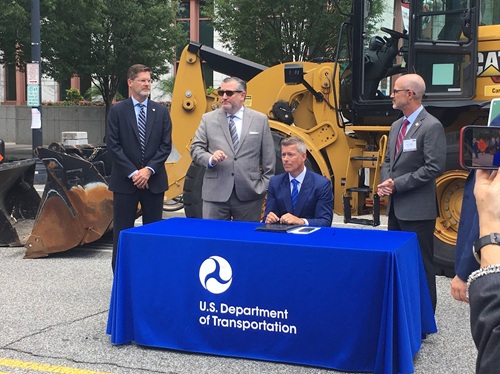A 2019 survey conducted by the American Association of State Highway and Transportation Officials indicates that 36 out of 50 state departments of transportation or 72 percent are now funding centers or programs to operate drones. That’s up from 20 out of 44 state DOTs or 45 percent in AASHTO’s 2018 survey.
On top of that, seven out of 10 state DOTs polled by AASHTO said they have hired “hundreds of staff” to manage drone operations. Those state DOTs, 36 in total, also reported having 279 Federal Aviation Administration-certified drone pilots on staff or approximately eight pilots per state.
In an effort to keep up with the demand for drone pilots, the survey found that 10 state DOTs have teamed up with academic organizations to train new ones.
AASHTO’s survey also found 24 state DOTs are conducting research with an academic institution. Three state DOTs are gathering real-world data through their participation in the FAA’s Integration Pilot Program, which allows them to fly drones beyond visual line of sight, at night, and over people – three things drone operators cannot do at this time without a special FAA waiver.
“The survey is just one example of how state DOTs are investing in the next-generation workforce,” said Carlos Braceras, executive director of the Utah DOT and AASHTO’s 2018-2019 president, in a statement. “Five years ago, you’d be hard pressed to find any state DOT looking to hire a drone pilot or set up a UAS [unmanned aerial system] program – but now we’re doing both of those things in a big way.”
When AASHTO conducted its first UAS/Drone survey in March 2016, no state DOT had incorporated drones into their daily operations. At that time, 33 state DOTs were exploring, researching, or testing drones, as well as developing internal policies to manage them.
“In three short years, we’ve gone from zero to 36 state DOTs executing drone missions internally,” said Jim Tymon, AASHTO executive director. “This giant leap is helping states work safer, smarter, and faster than ever before and that adds up to big savings for taxpayers and improved safety for motorists.”
 Top Stories
Top Stories


